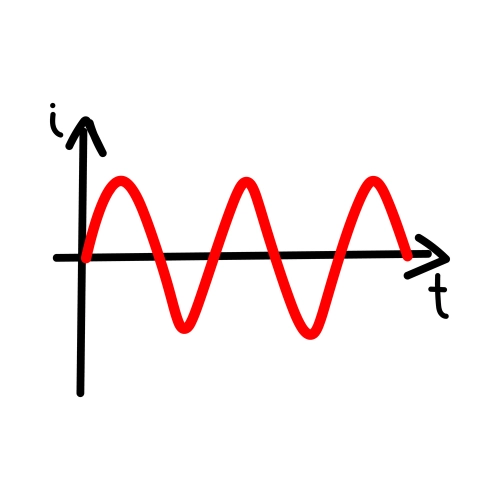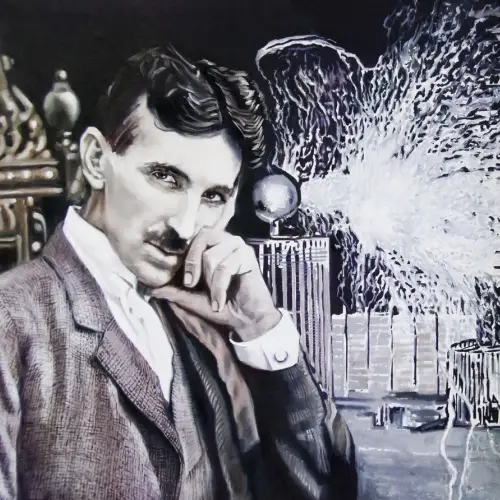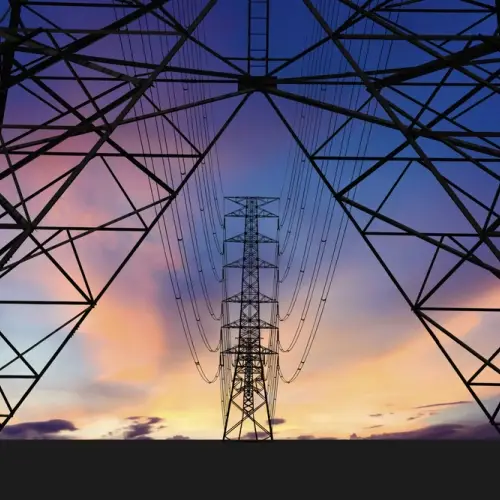
Alternating current (AC) is one of two types of electrical current used to transmit electricity. It is is produced by generators specifically designed for this purpose.
These AC generators convert mechanical energy into electrical energy, facilitating efficient production.
Who Invented Alternating Current?
Was alternating current invented or developed?
 The invention of alternating current (AC) was a gradual process involving both discovery and engineering innovation. The groundwork for AC electricity was laid by early scientific pioneers, while practical AC power systems were developed decades later.
The invention of alternating current (AC) was a gradual process involving both discovery and engineering innovation. The groundwork for AC electricity was laid by early scientific pioneers, while practical AC power systems were developed decades later.
The fundamental principle behind AC—electromagnetic induction—was discovered in 1831 by Michael Faraday. He demonstrated that a changing magnetic field can produce an electric current, a discovery that became the cornerstone of modern power generation and transmission.
However, AC electricity as we use it today was made possible by the work of Nikola Tesla in the late 19th century. Tesla invented the first efficient AC motor and developed technologies for AC power transmission. His inventions made it possible to transmit electricity over long distances with less energy loss, a major advantage over direct current (DC) systems.
Recognizing Tesla’s brilliance, George Westinghouse invested in his patents and led the charge in implementing AC power across the United States. Together, Tesla and Westinghouse championed AC during the famous “War of Currents” against Thomas Edison, who promoted DC.
Their victory marked a turning point in energy history, establishing AC electricity as the global standard for electrical power distribution.
The beginnings of AC
The discovery and development of alternating current (AC) involved multiple pioneers over time.
Michael Faraday, in 1831, laid the groundwork with his discovery of electromagnetic induction. He demonstrated that a changing magnetic field could induce an electric current in a conductor, a principle essential for generating AC. Building on this, Hippolyte Pixii constructed an early generator in 1832 that produced alternating current, although it was often converted to direct current (DC) for use at the time.
In the mid-19th century, engineers like Zénobe Théophile Gramme improved dynamo machines capable of generating AC. Later, Lucien Gaulard and John Dixon Gibbs introduced transformers and began exploring the potential of AC for electrical transmission, recognizing its advantages for long-distance power distribution.
 However, it was Nikola Tesla in the 1880s who revolutionized the use of AC. Tesla developed the induction motor and advanced AC generators, enabling the efficient conversion of mechanical energy into alternating electrical energy. His work allowed AC to be transmitted over long distances with minimal energy loss, a major improvement over DC systems.
However, it was Nikola Tesla in the 1880s who revolutionized the use of AC. Tesla developed the induction motor and advanced AC generators, enabling the efficient conversion of mechanical energy into alternating electrical energy. His work allowed AC to be transmitted over long distances with minimal energy loss, a major improvement over DC systems.
Tesla's innovations, combined with George Westinghouse’s financial and commercial support, led to AC becoming the dominant system for electricity generation and distribution. While Faraday provided the theoretical foundation, Tesla’s contributions made alternating current practical and transformative for modern electrical systems.
The Early Days of Electricity: From DC to AC
In the early days of electricity use during the 19th century, direct current (DC) was the dominant system. However, with the advent of alternating current, pioneered by the scientist Nikola Tesla, the world experienced a revolutionary shift in how electricity was generated, transmitted, and utilized.
Discovery of Electromotive Force
The discovery of electromotive force (EMF) was made by British scientist Michael Faraday in 1831. Faraday observed that a conductor rotating within a magnetic field generates a constant flow of electricity. This phenomenon enables the conversion of mechanical energy into electrical energy.
Faraday's discovery, known as electromagnetic induction, demonstrated the interplay between electric and magnetic fields, leading to the understanding of the electromagnetic force. Decades later, James Clerk Maxwell mathematically expressed these principles through his famous equations.
Nikola Tesla and the Alternating Current Distribution System
 Nikola Tesla was the first to propose an electricity distribution system using alternating current. At the time, Tesla was employed by Thomas Alva Edison’s company.
Nikola Tesla was the first to propose an electricity distribution system using alternating current. At the time, Tesla was employed by Thomas Alva Edison’s company.
In 1887, Tesla successfully built the first prototype of an induction motor. This motor operated using a type of electric current in which electrons change direction periodically due to alternating polarity. Tesla realized that AC generators produced an electric flow that shifted polarity multiple times within a specific timeframe.
The Challenges of Direct Current (DC) Transmission
The main challenge of DC power transmission was finding an efficient way to transport electricity over long distances. DC, as generated by dynamos, flows in a single direction, with constant positive and negative poles.
However, DC distribution had significant drawbacks: over long distances, it caused cables to overheat and led to energy dissipation. To address this, increasing the amperage was necessary, but this increased costs and wasted energy.
In contrast, AC systems could raise voltage levels, allowing electricity to be transmitted over long distances with minimal energy loss.
The Efficiency of Alternating Current (AC)
Alternating current significantly reduces energy losses over long distances by enabling high-voltage transmission. However, high voltage is dangerous to living beings, necessitating its reduction before distribution to homes and factories. This is achieved using transformers.
Lucien Gaulard and John Dixon Gibbs developed the first transformer for this purpose. Transformers allow the voltage to be increased to very high levels (high voltage) while reducing amperage to safe levels.
In 1885, physicist William Stanley also worked on improving AC transmission. He applied the principle of electromagnetic induction to transfer alternating current between electrically isolated circuits. While his efforts were not immediately successful, Nikola Tesla's system ultimately became the standard for electricity distribution.
Why Is Electrical Distribution Conducted Using Alternating Current?
The main advantages of AC distribution are basically two:
- Lower energy losses over long distances.
- Increased reliability and efficiency of AC motors.
Tesla proposed an AC distribution system to his employer, Edison, founder of General Electric, to solve long-distance transmission issues. However, Edison refused, as his DC-based system was commercially dominant at the time.
Despite initial resistance, the advantages of Tesla's AC system eventually prevailed. This competition between Tesla and Edison became known as the "War of the Currents," which sought to determine the better system for electricity distribution in the United States.
Westinghouse Electric Corporation acquired Tesla's AC patents and secured contracts for major projects, including the Niagara Falls hydroelectric power station. By the 20th century, DC distribution systems were rapidly phased out. The last DC lighting system in New York City was shut down in 2007.
The Spread of Alternating Current
The widespread adoption of alternating current (AC) was significantly facilitated by the development of transformers, which enabled efficient transmission of electrical power over long distances with minimal energy loss. Transformers adjust voltage levels, allowing high-voltage transmission that reduces energy dissipation and enhances overall efficiency.
This capability made AC more cost-effective for long-distance transmission compared to direct current (DC) systems.
The ability to efficiently transmit power over long distances was a game-changer for the burgeoning demand for electrical power.
Consequently, AC became the dominant system for electricity distribution worldwide, a status it maintains to this day.